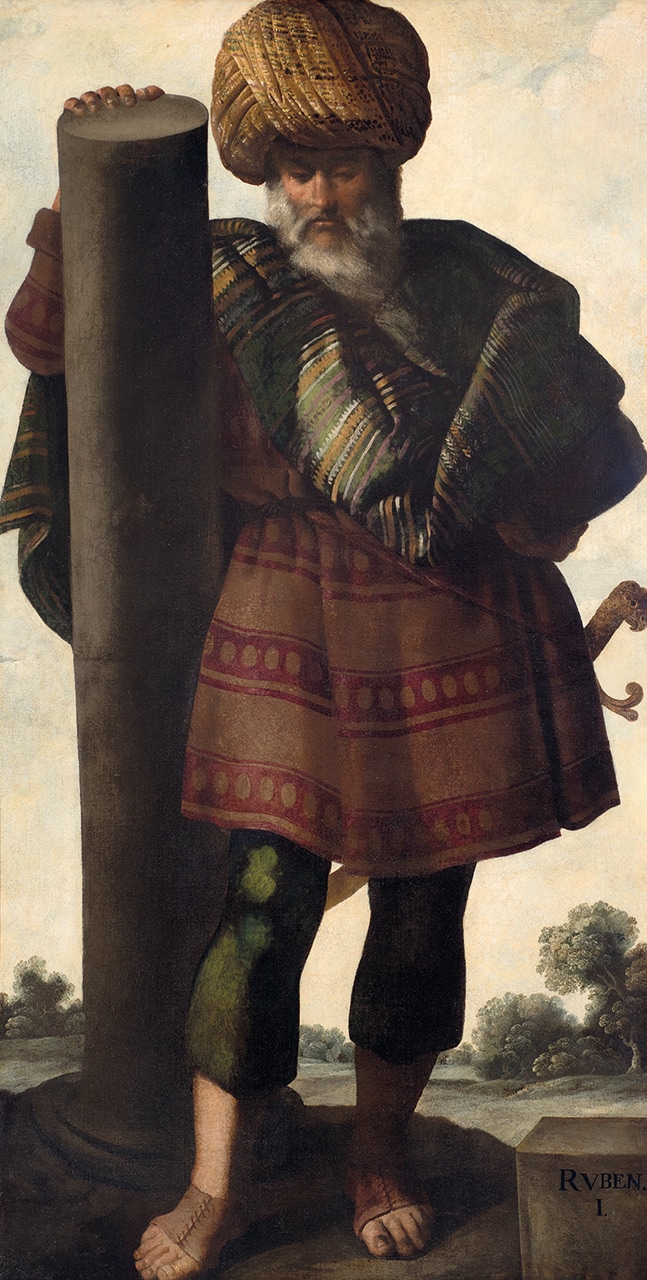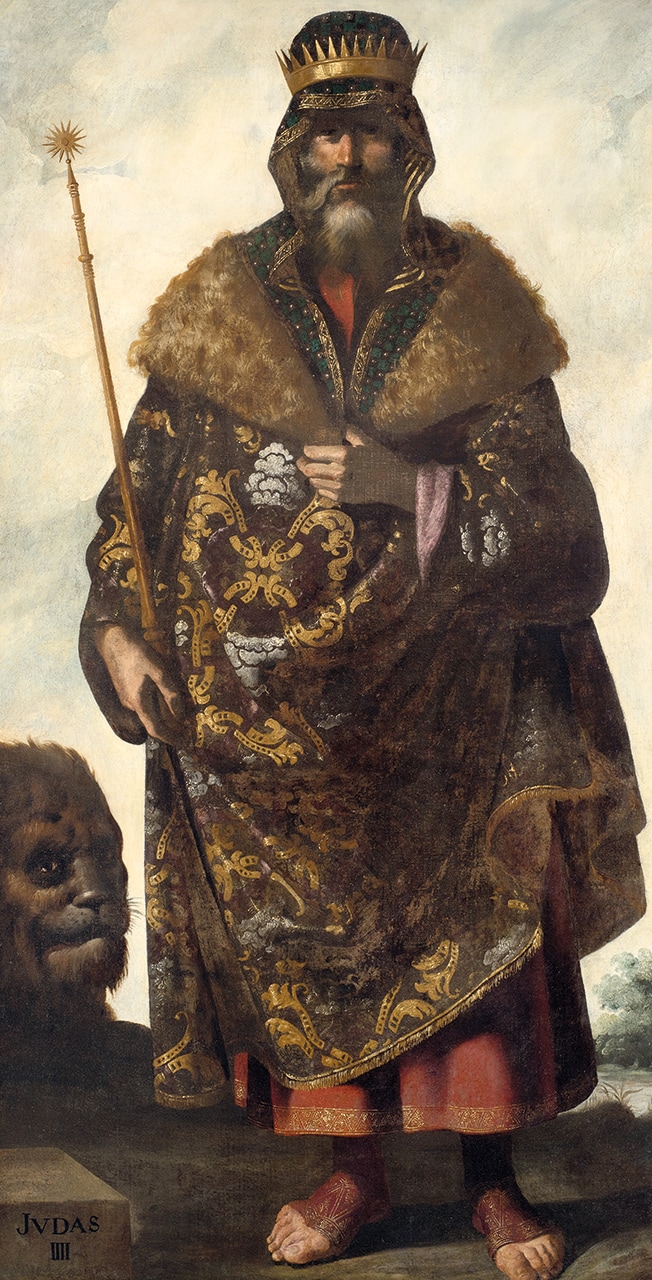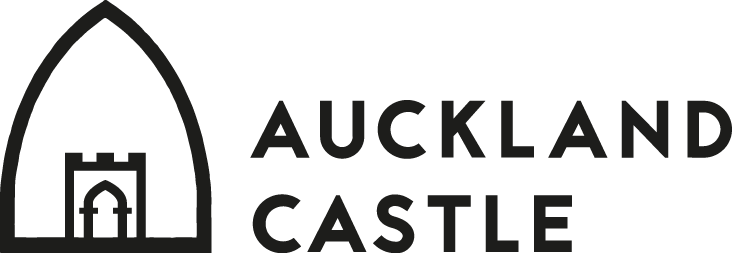

Reuben & Judah
Reuben and Judah belong to a series of thirteen imaginary portraits of the biblical figures of Jacob and his twelve sons, who are considered to be the forefathers of each of the Twelve Tribes of Israel. In both images their frontal stance communicates their physical and political power. In his depiction of Reuben, Zurbarán draws on Jacob’s address to his son in Genesis 49:3: ‘Ruben, my firstborn, thou art my strength, and the beginning of my sorrow’. Reuben’s right hand rests on a column, a traditional symbol of strength, while his large geometric turban serves almost as a capital. Despite the grandeur of his appearance, the image also references the shame of a son who betrayed his father’s trust by sleeping with Bilhah, his concubine. Reuben’s eyes are downcast, as if in recognition that his mistake will lead to his Tribe being conquered and assimilated by foreign nations. An image of strength is in this way transformed into one of familial disappointment.
Zurbarán portrays Judah as a model of earthly kingship. In his hand he carries a star-tipped sceptre and his crown rests on his head, pressing down onto the richly decorated fabric of his headdress. The crouching lion is a reference to Jacob calling his son ‘a lion’s whelp’ (Genesis 49:9). It also serves as a symbol of kingship and of the future resurrection of Christ. The artist has carefully rendered the beauty and the qualities of Judah’s regal attire, which includes finely embroidered leather sandals, a brocade robe, and a fur stole. The fine tufts of the stole, which can be seen in silhouette against the cloudy backdrop, echo the hairs of the lion’s mane, further reinforcing the association between man and beast.
Zurbarán’s compositional ideas relied heavily on prints from Northern Europe, particularly the series of engravings of The Twelve Sons of Jacob by Jacob de Gheyn II (c. 1565–1629) after paintings by Karel van Mander I (1548–1606). In Zurbarán’s portrait of Judah this influence is particularly noticeable in the presence of the lion, the fur stole, the star-tipped sceptre, and the crown, all of which appear in de Gheyn’s print of Judah. However, Zurbarán did not slavishly copy from these prints, but rather, as the result of a process of creative assimilation, changed the appearance of each figure so as to bring new meanings and visual effects to his work.
Zurbarán was born in Extremadura to a family of haberdashers, a trade that may have influenced his lifelong interest in the painting of fabric and drapery. His early artistic training was undertaken in Seville, the city where he would establish a thriving workshop from the late 1620s onwards. Working for Seville’s growing number of religious foundations, Zurbarán used the close observation of nature, coupled with dramatic light effects, to create paintings that reflected the intense spirituality of his patrons.
 Click to zoom and pan
Click to zoom and pan
 Click to zoom and pan
Click to zoom and pan
...
Your feedback is very important to us. Would you like to tell us why?
We will never display your feedback on site - this information is used for research purposes.
Artwork Details
Title
Reuben.
Artist
Francisco de Zurbarán (Fuente de Cantos, Badajoz, c. 1598 – Madrid, 1664).
Date
c. 1640–45.
Medium and Support
Oil on canvas.
Dimensions
200 x 103.2 cm.
Marks and Inscriptions
Inscribed ‘Rvben I’ on stone plinth at bottom right.
Acquisition Details
Acquired by the Auckland Castle Trust and the Zurbarán Trust from the Church Commissioners, 2011.
Previous Owners
Sir William Chapman (c. 1670–1737); acquired in c. 1722 by James Mendez; his posthumous sale, London, 1756; acquired by Richard Trevor, Bishop of Durham (1707–71); thereafter to the Bishops of Durham.
Institution
Auckland Castle, Bishop Auckland.
Title
Judah.
Artist
Francisco de Zurbarán (Fuente de Cantos, Badajoz, c. 1598 – Madrid, 1664).
Date
c. 1640–45.
Medium and Support
Oil on canvas.
Dimensions
201.1 x 103.2 cm.
Marks and Inscriptions
Inscribed ‘Jvdas III’ on stone plinth at bottom left.
Acquisition Details
Acquired by the Auckland Castle Trust and The Zurbarán Trust from the Church Commissioners, 2011.
Previous Owners
Sir William Chapman (c. 1670–1737); acquired in c. 1722 by James Mendez; his posthumous sale, London, 1756; acquired by Richard Trevor, Bishop of Durham (1707–71); thereafter to the Bishops of Durham.
Institution
Auckland Castle, Bishop Auckland.
Bibliography
Odile Delenda, Francisco de Zurbarán, 1598–1664: catálogo razonado y crítico, 2 vols. (Madrid: Fundación Arte Hispánico & Wildenstein Institute, 2009), pp. 506–23;
Clare Baron & Andy Beresford,‘Zurbarán’s Jacob and his Twelve Sons’, in Spanish Art in County Durham, ed. Clare Baron & Andy Beresford (Bishop Auckland: Auckland Castle Trust, The Bowes Museum, & Durham University, 2014), pp. 26–43;
Susan Grace Galassi, Edward Payne, & Mark A. Roglán, ed., Zurbarán, ‘Jacob and his Twelve Sons: Paintings from Auckland Castle (Madrid: Centro de Estudios Europa Hispánica, 2017).
